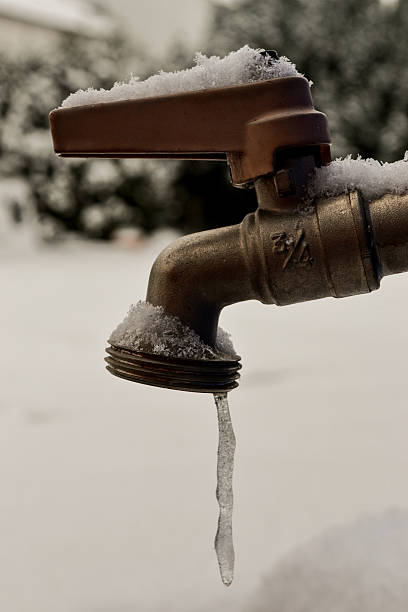Protecting Against Frozen Plumbing: Top Methods for Cold Weather
Protecting Against Frozen Plumbing: Top Methods for Cold Weather
Blog Article
Right here below you'll find more good quality material in relation to 6 Ways to Prevent Frozen Pipes.

Cold weather can wreak havoc on your pipes, specifically by freezing pipelines. Right here's how to stop it from happening and what to do if it does.
Intro
As temperatures drop, the threat of frozen pipes rises, possibly resulting in pricey repair services and water damage. Understanding exactly how to prevent icy pipes is critical for home owners in cold environments.
Avoidance Tips
Protecting at risk pipes
Cover pipes in insulation sleeves or utilize warmth tape to safeguard them from freezing temperature levels. Concentrate on pipes in unheated or outside locations of the home.
Home heating techniques
Keep interior spaces adequately warmed, specifically locations with pipes. Open up cupboard doors to allow warm air to flow around pipes under sinks.
How to recognize icy pipes
Look for reduced water flow from faucets, uncommon smells or noises from pipes, and noticeable frost on revealed pipes.
Long-Term Solutions
Structural modifications
Take into consideration rerouting pipelines far from exterior walls or unheated areas. Add extra insulation to attics, basements, and crawl spaces.
Upgrading insulation
Buy premium insulation for pipes, attics, and walls. Proper insulation helps preserve consistent temperature levels and decreases the threat of icy pipes.
Securing Outdoor Pipes
Garden pipes and outdoor taps
Disconnect and drain yard hose pipes before winter. Set up frost-proof faucets or cover exterior taps with protected caps.
Comprehending Frozen Pipes
What causes pipelines to ice up?
Pipes freeze when revealed to temperature levels below 32 ° F (0 ° C) for prolonged durations. As water inside the pipelines ices up, it expands, putting pressure on the pipeline wall surfaces and possibly causing them to break.
Threats and damages
Frozen pipes can bring about water interruptions, residential or commercial property damage, and costly repair services. Ruptured pipelines can flooding homes and cause extensive architectural damage.
Indicators of Frozen Water Lines
Recognizing icy pipes early can stop them from rupturing.
What to Do If Your Pipelines Freeze
Immediate activities to take
If you suspect frozen pipelines, maintain faucets open up to ease pressure as the ice melts. Make use of a hairdryer or towels soaked in warm water to thaw pipes gradually.
Conclusion
Stopping frozen pipes calls for proactive procedures and fast reactions. By recognizing the reasons, signs, and safety nets, home owners can protect their plumbing throughout winter.
6 Proven Ways to Prevent Frozen Pipes and Protect Your Home
Disconnect and Drain Garden Hoses
Before winter arrives, start by disconnecting your garden hoses and draining any remaining water. Close the shut-off valves that supply outdoor hose bibs and leave the outdoor faucet open to allow any residual water to drain. For extra protection, consider using faucet covers throughout the colder months. It’s also important to drain water from any sprinkler supply lines following the manufacturer’s directions.
Insulate Exposed Pipes
Insulating your pipes is an effective way to prevent freezing. Pipe insulation is readily available at home improvement stores and is relatively inexpensive. Pay close attention to pipes in unheated areas such as the attic, basement, crawl spaces, or garage. Apply foam insulation generously to create a buffer against the cold. You can also wrap your pipes in heat tape or thermostat-controlled heat cables for added warmth.
Seal Air Leaks
Inspect your home for any cracks or openings that could let in cold air. Seal any holes around the piping in interior or exterior walls, as well as the sill plates where your home rests on its foundation. Additionally, make sure to keep your garage door closed unless you’re entering or exiting. Leaving it open creates a significant air leak that can lead to frozen pipes.
Allow Warm Air Circulation
During cold snaps, it’s essential to allow warm air to circulate evenly throughout your home. Leave interior doors ajar to promote better airflow. Open kitchen and bathroom cabinets to help distribute heat consistently around the rooms. If you have small children or pets, be sure to remove any household chemicals or potentially harmful cleaners from open cabinets for safety.
Let Faucets Drip
A small trickle of water can make a big difference in preventing ice formation inside your pipes. When temperatures drop significantly, start a drip of water from all faucets served by exposed pipes. This continuous flow helps prevent the water from freezing. Additionally, running a few faucets slightly can relieve pressure inside the pipes, reducing the chances of a rupture if the water inside does freeze.
https://choateshvac.com/6-proven-ways-to-prevent-frozen-pipes-and-protect-your-home/

I was shown that report on Preventing and dealing with frozen pipes through a pal on a different blog. Do you know about another person who is inquisitive about the niche? Please feel free to promote it. Thank you for your time spent reading it.
Click Here Report this page